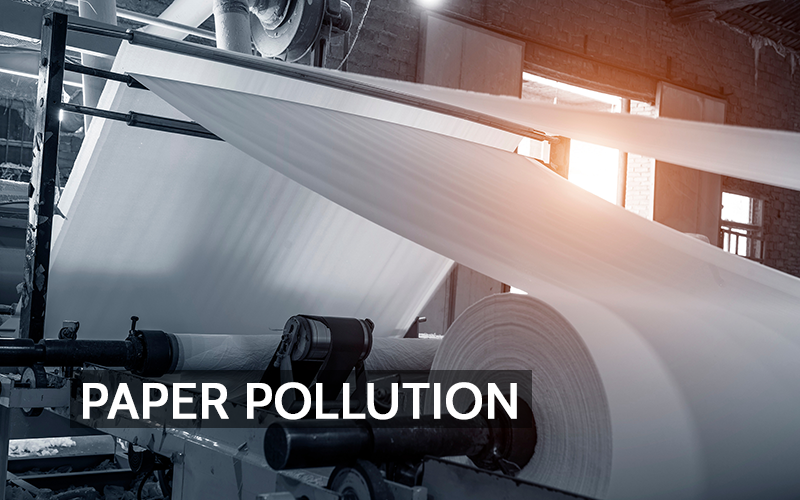The paper industry has long been a cornerstone of global commerce and daily life, providing everything from packaging materials to office supplies. However, its environmental footprint, particularly its impact on air quality, remains a significant concern. While advancements in technology and regulatory frameworks have mitigated some of these effects, the industry still faces challenges in reducing emissions and pollution. Understanding these impacts and the measures in place to address them is crucial for fostering a more sustainable future.
Emissions from the Paper Industry
Paper manufacturing is an energy-intensive process that involves several stages, including pulping, bleaching, and drying. Each stage has the potential to release harmful pollutants into the atmosphere. The primary air pollutants associated with the paper industry are particulate matter (PM), volatile organic compounds (VOCs), sulfur dioxide (SO2), nitrogen oxides (NOx), and greenhouse gases such as carbon dioxide (CO2).
- Particulate Matter (PM): The combustion of fossil fuels in paper mills to boil paper pulp contributes to the emission of fine particulates. These particles can penetrate deep into the respiratory system, posing health risks to nearby communities. Side note here, I grew up in New Jersey, down the road from a paper mill. We were reminded every time the wind direction changed…
- VOCs: The pulping and drying processes release VOCs, which can lead to the formation of ground-level ozone, a harmful pollutant that exacerbates respiratory conditions and damages vegetation.
- Sulfur Dioxide and Nitrogen Oxides: Combustion processes emit SO2 and NOx, both of which contribute to acid rain and respiratory illnesses. NOx emissions also play a role in the formation of smog, reducing air quality in surrounding areas.
- Greenhouse Gases: Paper production contributes to global warming through the release of CO2 during energy generation and the decomposition of organic waste in landfills.
Regulations Governing Paper Industry Emissions
To curb the environmental impact of the paper industry, governments and international bodies have implemented stringent regulations. These measures aim to reduce harmful emissions, promote cleaner technologies, and ensure compliance with environmental standards.
- Clean Air Act (CAA) in the United States: Under the CAA, the Environmental Protection Agency (EPA) has established National Emission Standards for Hazardous Air Pollutants (NESHAP) for pulp and paper mills. These standards limit the release of toxic air pollutants such as dioxins, furans, and methanol. The EPA also requires mills to adopt Maximum Achievable Control Technology (MACT) to minimize emissions.
- European Union Industrial Emissions Directive (IED): The IED mandates that paper mills in EU member states adopt Best Available Techniques (BAT) to minimize emissions. This includes measures like improving energy efficiency, reducing water consumption, and implementing advanced waste management practices.
- Emission Trading Schemes (ETS): Programs like the EU ETS provide economic incentives for paper mills to reduce their carbon emissions. By placing a cap on overall emissions and allowing companies to trade allowances, these schemes encourage innovation and investment in greener technologies.
- Regional Initiatives in Developing Nations: Many countries in Asia, where paper production has expanded significantly, are adopting stricter emission controls. For instance, China has introduced policies to reduce VOC emissions and promote the use of recycled materials in paper production.
Sustainable Practices in the Paper Industry
In addition to regulatory compliance, the paper industry is increasingly embracing sustainability initiatives to mitigate its impact on air quality. These practices include:
- Transitioning to Renewable Energy: Many mills are shifting from coal and oil to renewable energy sources such as biomass and solar power. For example, biomass energy derived from wood waste not only reduces reliance on fossil fuels but also utilizes byproducts of the papermaking process.
- Closed-Loop Systems: Modern mills are adopting closed-loop systems that recycle water and chemicals, significantly reducing emissions and waste.
- Adoption of Cleaner Technologies: Innovations such as oxygen delignification and enzyme-based pulping processes minimize the need for harmful chemicals and reduce VOC emissions.
- Use of Recycled Paper: Recycling paper reduces the demand for virgin pulp, decreasing energy consumption and emissions. According to the American Forest & Paper Association, recycling one ton of paper saves about 7,000 gallons of water and reduces greenhouse gas emissions by one metric ton.
- Carbon Sequestration Initiatives: Some companies are investing in afforestation and reforestation projects to offset their carbon footprint. Forests act as carbon sinks, absorbing CO2 and improving air quality.
Challenges and Future Directions
Despite progress, the paper industry faces challenges in achieving sustainability. High costs of implementing advanced technologies and maintaining compliance with stringent regulations remain barriers, particularly for small and medium-sized enterprises. Additionally, the increasing demand for paper products, driven by e-commerce and packaging needs, exacerbates the environmental impact.
To address these issues, continued collaboration between industry stakeholders, governments, and environmental organizations is essential. Research and development in alternative materials, such as biodegradable plastics and digital solutions, can also help reduce the industry’s reliance on traditional paper products.
The paper industry’s impact on air quality shows the importance of balancing economic growth with environmental stewardship. While regulations and sustainable practices have made strides in mitigating emissions, there is still room for improvement. By embracing cleaner technologies and prioritizing renewable energy, the industry can further reduce its environmental footprint and contribute to a healthier planet. Public awareness and consumer choices also play a crucial role in driving demand for eco-friendly products, ultimately shaping a more sustainable future for the paper industry.
Related Articles:
What are Nitrogen Oxides and Why Do We Track Them?
References:


